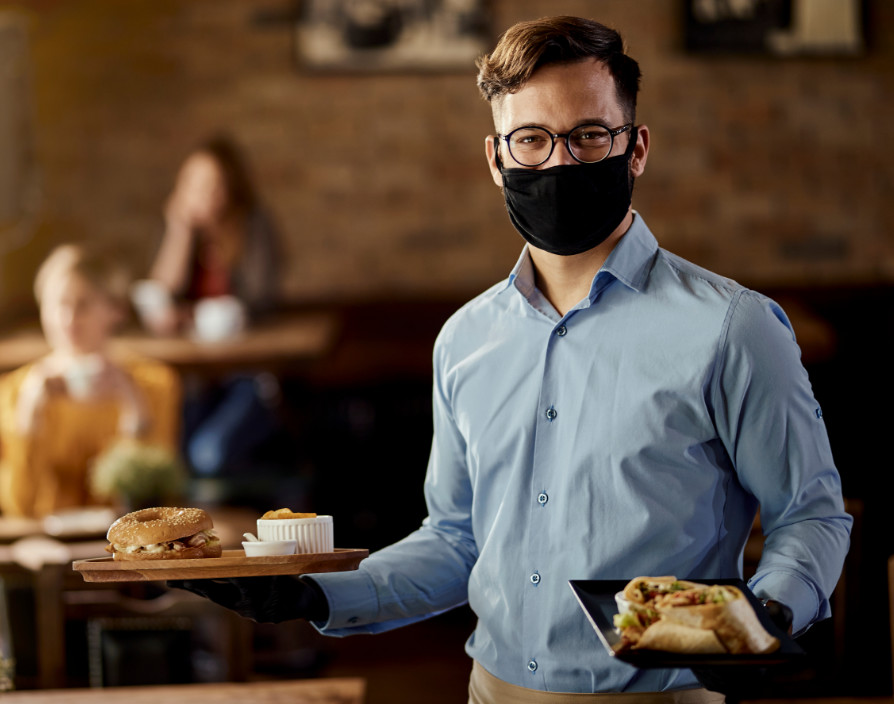As pandemic restrictions eased from 17th May, restaurants were able to welcome customers back into their premises to enjoy the dine-in experience once again. From fast food to fast casual and fine dining, restaurants are now having to reconsider their customer experience across all their services. Whether it’s delivery, takeaway or dine-in, they must provide customers with a more personalised and seamless customer experience. It’s about creating memorable customer experiences that produce customer loyalty and can constantly deliver engaging, memorable experiences that drive a connection to the brand at every touchpoint.
Sanjeev Sanghera, Döner Shack’s Co-Founder & Managing Director, explains how all restaurant franchise brands need to adjust to offer a new standard in responsiveness, customer convenience and safety to regain consumer confidence in a post-pandemic world.
Rapid digital acceleration
The pandemic has undoubtedly stripped some personal connection from the typical restaurant experience but, like most businesses, the sector has experienced rapid digital acceleration which gives us an opportunity to rectify this. Customers want a consistent and personalised digital experience across all possible touchpoints. So, whether they engage with us via delivery, drive through, apps or website, restaurant brands need to offer a consistent and cohesive user experience.
We’re implementing several new customer engagement software solutions into our business to manage the interactions and communication with our customers via a number of touch points, as well as help guide them through the customer journey. For example, we’re developing a new loyalty app and have set up a ‘Click & Collect’ area so that people coming into the restaurant can engage with our brand whether they are eating in, collecting a takeaway or ordering a delivery online. We have also integrated our delivery partner’s platform into our website, so we can retain direct contact with our customers at all times.
Convenience
After a year in which takeout and delivery has thrived – nearly half (46%) of UK households ordered meals for delivery in the past year, up from 30% in 20191. Customers now expect a convenient experience, where they can get their food on their terms in the quickest and most efficient way possible. The temporary closure of in-restaurant dining, coupled with safety concerns, was a key factor in focusing customers even more on convenience, eager for drive-through, takeout and delivery as alternative options.
Ultimate convenience and engagement are critical for restaurant franchises to ensure the customer journey is seamless at each stage. For fast-casual restaurants, such as Döner Shack, digital integration with store designs and mobile technology is the future – making the entire customer experience integrated.
Refreshing the design
With the growth of takeout and delivery, many restaurants have had to review their design and indoor space and, in some cases, reduce the footprint of their dining room in order to set aside a larger area for cooking and preparing orders. Innovation and automation, such as robotics, are also playing a key role in kitchens to create a more efficient, safe and easy place to work. Döner Shack is already pioneering the way forward as a fast-casual restaurant franchise and has implemented state-of-the-art robotic kebab cutters in its kitchens to help reduce food preparation time and food waste.
Creating a simple and seamless experience and journey for our customers is top of mind when we design our restaurants, several of which are due to launch over the next few months in Manchester, Leicester and Glasgow. We want to avoid long queues in a post-pandemic era and separate our sit-in diners from our delivery and click & collect customers, enabling our customers to have an elevated and personal level of service in whatever way they choose to interact with us.
Increased safety
It’s not only important to provide a safe environment, but to also reassure potentially anxious customers that there are cleaning procedures in place, such as signs placed on tables that have been sanitised, hand sanitising stations and employees wearing masks for some time to come. By making sure new hygiene and safety protocols are highly visible throughout the restaurant, we signal to customers how seriously management takes that responsibility and builds trust in our brand. And customers are more likely to eat out and return to restaurants they trust.
This past year has been a challenge for the restaurant industry globally, but it has also given us the opportunity to innovate and find new ways to serve our customers. Restaurants have had to become more agile and provide customers with a more personalised and seamless customer experience. Restaurant franchises can’t afford to remain stagnant and the actions they take now will go a long way towards preparing their restaurants to serve customers, not just during but also long after the recovery. The outlook for restaurants is strong and the industry will thrive again.



































